Explore remote areas of our coastline, uncover our rich maritime heritage and enjoy breathtaking scenery as you cruise around Britain’s shores where remote islands and splendid castles are all part of the journey.
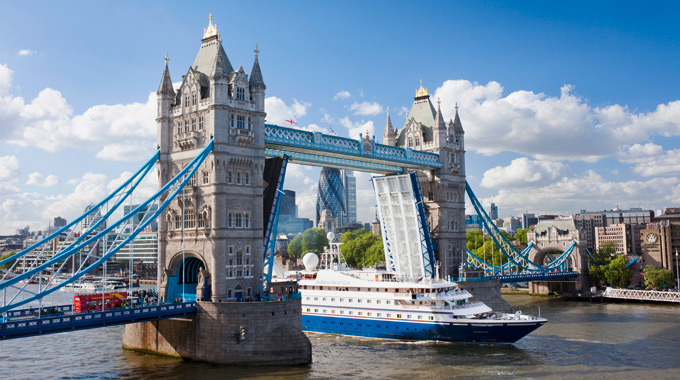
Exploring Britain from the sea was the height of elegance and fashion in the 1920s. Today, a voyage around ‘This Sceptered Isle’ is once again proving popular. With 12,000 kilometres (7,500 miles) of coastline, it’s no surprise that travelling around Britain by ship is so high on many travellers’ ‘bucket lists’. It is an opportunity to see our historic land unfold from a most unusual perspective, and it is the most relaxing way to enjoy a rich tableau of countryside and coastline that would otherwise be out of reach.
Setting sail from Dover, London, Portsmouth and Southampton, a variety of vessels, ranging from smaller intimate ones with a country club ambience to titans with show lounges and a wide range of on-board activities, offer something for everyone. The sheer diversity of Britain’s coastline from historic cities to tranquil anchorages, picture-perfect ports to mystical islands, makes these seaborne odysseys one of life’s great experiences.
There are few cruises that can boast a send-off that’s more memorable than when Silversea’s Silver Cloud slips her moorings beside HMS Belfast in the Pool of London. As the boutique-style ship takes her position in the middle of the River Thames, the mighty bascules of Tower Bridge are raised as if in salute. Slowly, almost majestically, the vessel heads downriver past the imposing fortress that is the Tower of London and the contrasting glass towers of the City of London, through the Thames Barrier, all the time following the course of this celebrated river that took centre stage during this year’s Diamond Jubilee River Pageant.
Known as the ‘Athens of the North’, Edinburgh is a peacock of a city. The grandeur of its 14th-century castle, the pomp of the Royal Mile, the harmonious façades of the neo-classical New Town; together they create a striking cityscape. The overnight stay in port allows the opportunity to enjoy the massed pipes and drums that are such a spectacular element of the renowned Royal Edinburgh Military Tattoo stagedhttps://www.britain-magazine.com/wp-admin/user-new.php on the esplanade of the imposing castle.
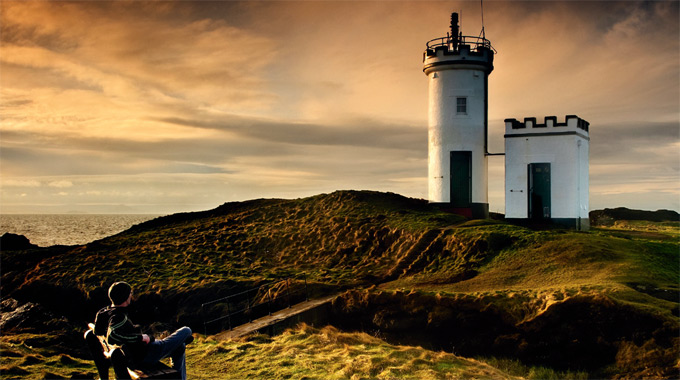
After an afternoon’s passage from the Firth of Forth, past quaint villages of the East Neuk of Fife and venerable St Andrews, Silver Cloud makes landfall in the Moray Firth. Here Invergordon is the gateway to Loch Ness and ruined Urquhart Castle. There’s the chance to explore Scottish history amid the splendour of Cawdor Castle, or at Dunrobin Castle, with its fine collection of paintings, objets d’art and family memorabilia of the Earls of Sutherland.
After navigating the northern coastline of Scotland with the possibility of glimpsing basking sharks, tissues of thin white clouds hovering over granite peaks unravel to reveal the Inner Hebrides. The Isle of Skye is best known as the place where Bonnie Prince Charlie escaped to during the 1745-6 Jacobite Uprising. Portree, the main port and capital of Skye, is a quaint, colourful fishing town. Not far away, Dunvegan Castle is the oldest continually inhabited castle in Scotland and ancestral home of the chiefs of the Clan MacLeod. The castle’s five acres of formal gardens are a hidden oasis featuring an eclectic mix of plants, woodland glades, shimmering pools fed by waterfalls and streams flowing down to the sea.
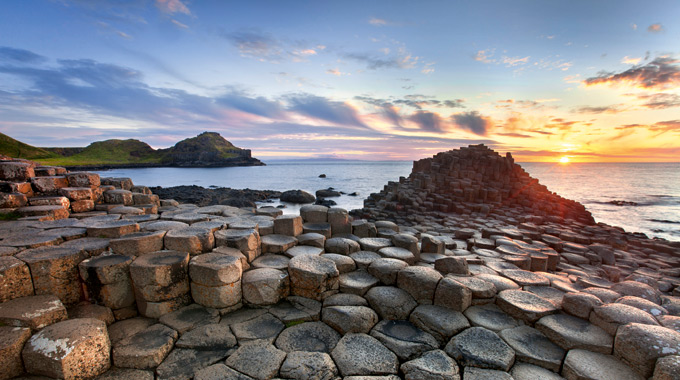
Surrounded by rolling green hills, the ancient city of Belfast lies on the rugged Northern Ireland coastline where the River Lagan flows to the sea. No first-time visitor to Northern Ireland should miss the World Heritage Site of the Giant’s Causeway, where 40,000 hexagonal basalt columns form stepping stones that disappear into the sea. Additionally, the brand-new ‘Titanic Experience’ marvellously recreates the construction and launch of the ill-fated White Star liner. As Silver Cloud heads south, visits are made to Dublin and Cobh, the port of Cork.
Falmouth has protected the deep water anchorage of the Carrick Roads since Tudor times. The third deepest natural harbour in the world is famous as the start or end point of many round-the-world voyages, such as those of Sir Francis Chichester and Dame Ellen MacArthur. There are endless opportunities to step back in time at Henry VIII’s coastal stronghold of Pendennis Castle, or come bang up to date at the renowned Eden Project, a huge biosphere that recreates the planet’s ecosystems, from rainforest to desert. After ten enchanting days the cruise concludes in Southampton.
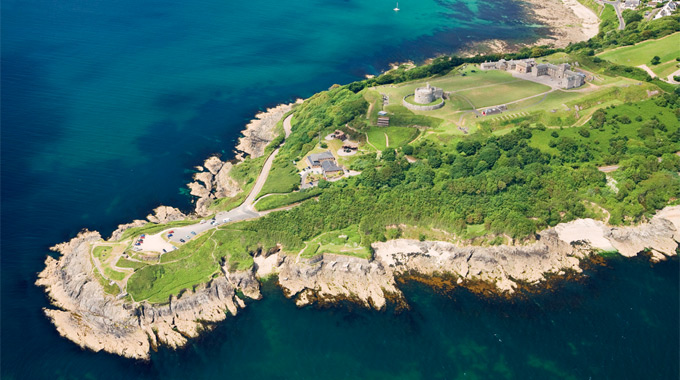
Unequivocally English, Swan Hellenic’s Minerva is, for many, the pre-eminent choice when it comes to cultural cruising and soft adventure. Reflecting the enquiring minds of its passengers, the most remarkable room on board is the 5,000-volume library. Another unique facet is the range of distinguished guest speakers who offer illuminating insights that bring each destination into sharp focus.
In June 2013, the exultantly titled ‘Realms of the British Isles’ cruise sets sail on a 15-day circumnavigation from Portsmouth. On-board experts include former Head of Archaeology for the National Trust Dr David Thackray and cultural historian Siân Evans, who has worked for the V&A. It’s impossible to ignore Portsmouth’s maritime heritage. HMS Victory and HMS Warrior take centre stage in the Historic Dockyard where a museum displays Henry VIII’s Tudor warship Mary Rose. Undoubtedly, this is a perfect precursor to any cruise around Britain.
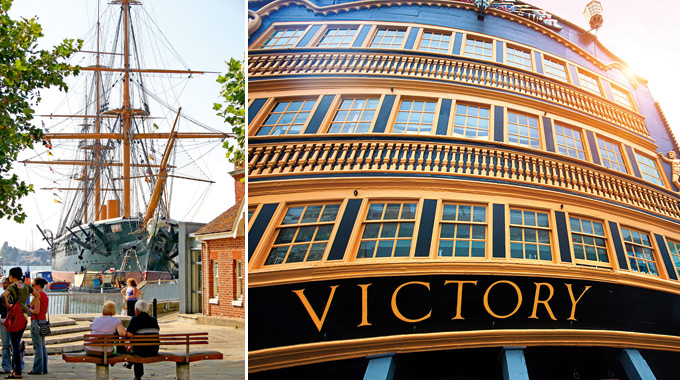
The itinerary reads like an atlas of the imagination and includes a host of ports that would be impossible to reach by any other means in such a short space of time. The Port of Tyne, on England’s northeast coast, is the gateway for an exploration of the World Heritage Site of Hadrian’s Wall, which was begun in AD122; a cruise around the Farne Islands, home to more than 100,000 breeding pairs of sea birds; or a relaxing amble around the world’s most celebrated contemporary garden at Alnwick.
Heading to the most northerly point on Britain’s mainland, the sea assumes the colour of beaten metal. On land, seals bask and eagles dare as the sentinel-like outcrops of Duncansby Head set the scene for landfall at Scotland’s deep-water harbour of Scrabster. A short drive away lies John O’Groats, Dunnet Head, and the Castle of Mey – former home of Queen Elizabeth, the Queen Mother. The next day the craggy, western coastline comes into view. A navigation past the Summer Isles is a prelude to Ullapool, where the warming effect of the Gulf Stream is apparent at the incomparable subtropical Inverewe Garden.
Beneath the swirling mists that encircle the northerly tip of the Isle of Mull, the village of Tobermory emerges to reveal its houses lining Main Street painted in vivid pinks and vibrant yellows, jet blacks and rich maroons. A serene aura abounds on the island of Iona, where St Columba established his Celtic church in AD563. Today the restored abbey church is a truly sacred site. Flocks of gannets escort Minerva towards Bangor in Northern Ireland where neoclassical Mount Stewart House, ancestral home of the marquesses of Londonderry, boasts wonderful gardens. The highlight of the call at Holyhead, separated from Wales by the Menai Strait, is a visit to Caernarfon Castle, site of the investiture of HRH Prince Charles in 1969.
The first glimpse of the windswept islets and skerries of the Isles of Scilly is one of white sandy beaches surrounded by turquoise seas. The island of Tresco not only boasts Cromwell’s Castle, which dates from the mid 17th century, but the fabulous Tresco Abbey Garden, which was founded in the 1830s. The theme continues at Fowey where the Lost Gardens of Heligan are a superb 200-acre oasis that has been hailed ‘the garden restoration of the century’.
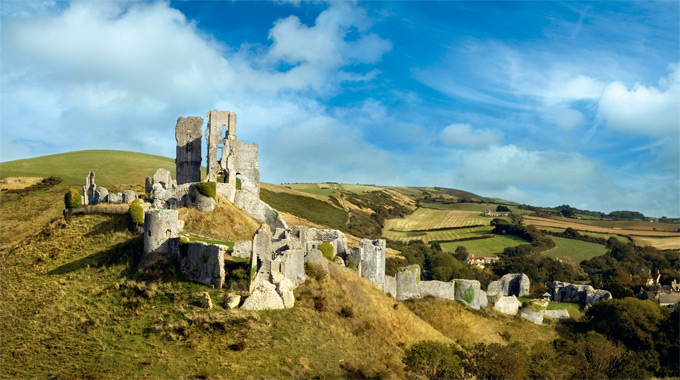
St Peter Port in the Channel Island of Guernsey boasts tumbling terraced gardens, winding streets and leafy alleyways. Castle Cornet, the last Royalist stronghold of the English Civil War, is now home to several museums; while the German Occupation Museum gives a vivid account of island life during World War II. As the captain sets a northerly course the iconic Portland Bill lighthouse signals arrival at Dorset’s Jurassic Coast. At the nearby romantic Norman ruins of Corfe Castle a thousand years of history are on display at this evocative survivor of the English Civil War; while the Georgian splendour of Kingston Lacy boasts paintings by Rubens, Titian, Van Dyck and Brueghel. Few can dispute there is something quite surreal about cruising around This Sceptered Isle.
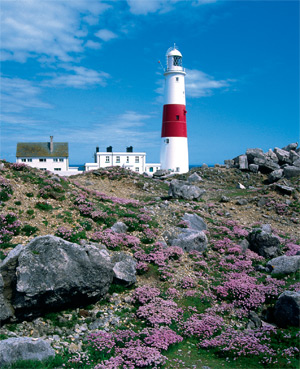
A voyage among the beautiful and remote islands of the Hebrides, Western Isles and the intricate lochs and inlets of Scotland’s West Coast on board the Hebridean Islands Cruises Hebridean Princess is an unalloyed delight.
Celebrating its 25th year in 2013, this eclectic vessel conveys just 50 ‘house guests’, and was chartered by the Royal Family for their summer holiday in 2006 and 2010.
This sublime vessel sails on cruises ranging from four to ten nights between March and November, mostly from Oban on Scotland’s west coast. Included are privately escorted tours and eminent guest lecturers, which next year include Sotheby’s valuation expert Nicholas Merchant on April’s ‘Castles and Gardens of the West’ cruise.
The eight-passenger European Waterways Scottish Highlander cruises in the summer months on six-night sailings through the 60-mile long Caledonian Canal, between Inverness and Fort William. Pampered by a crew of four, passengers on this hotel-barge enjoy the ultimate in indulgence. During the leisurely navigation of Loch Dochfour, Loch Ness, Loch Oich, and Loch Lochy, visits are made to Cawdor Castle; the poignant battleground of Culloden Moor; brooding Glen Coe, site of the 1692 massacre; and Urquhart Castle’s evocative ruins. Fascinating as these excursions are, it is the incomparable vistas of forbidding mountains and serene waterscapes that conjure a spell of indescribable magic.
| Related articlesMighty monuments See Britain by waterway Somerset: Land of the summer people Discover Liverpool |
Click here to subscribe! |

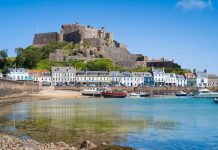
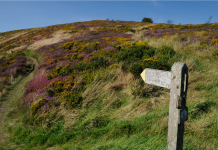


 © 2024
© 2024